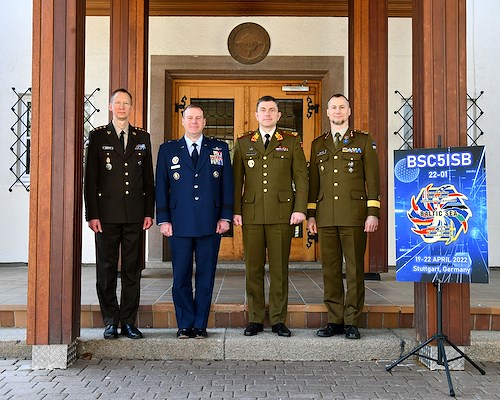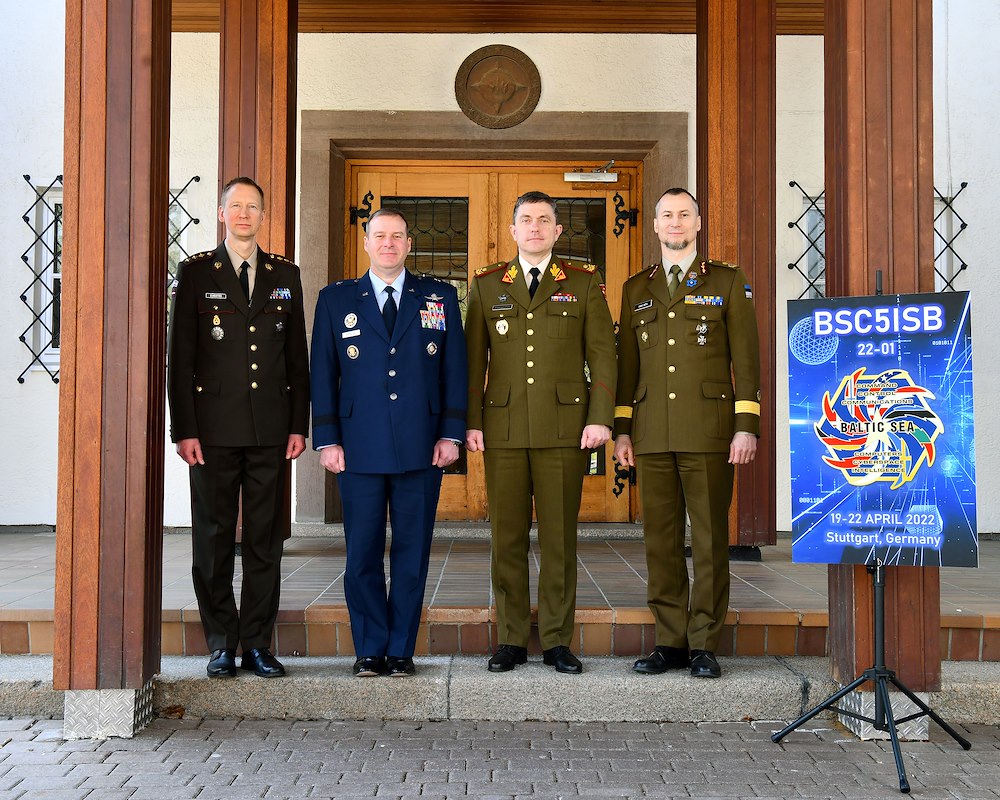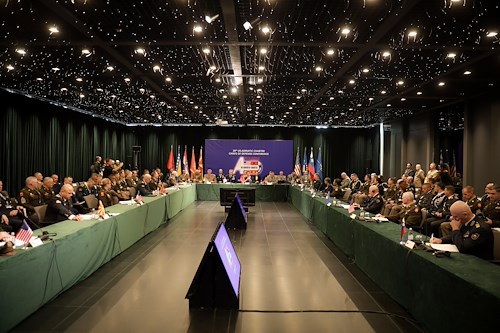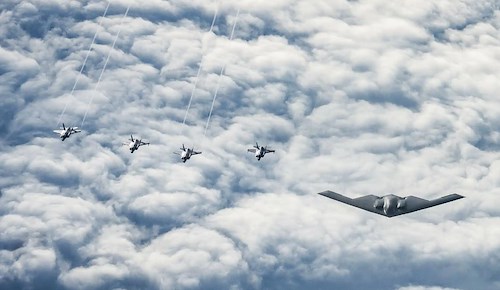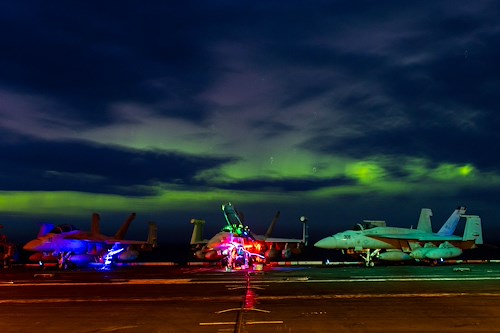Gallery contains 4 images
×
Photo 1 of 4
Baltic Sea C5I Synchronization Board
Military leaders from Baltic nations and USEUCOM met during the Baltic Sea C5I Synchronization Board in Stuttgart, Germany, Apr. 22. This is the
first time the board met after a milestone Terms of Reference arrangement was signed last year in Tallinn, Estonia. This arrangement reaffirmed the
U.S. and Baltic Allies' commitment to improve warfighting interoperability among all parties and across all domains to be better postured to defend
against future threats.
Photo by: U.S. European Command Public Affairs
Photo 2 of 4
Baltic Sea C5I Synchronization Board
Brig Gen Enno Mõts, chief of the Headquarters of the Estonian Defense Force, delivers remarks during the Baltic Sea C5I Synchronization Board
April 22 in Stuttgart, Germany. The Baltic Sea C5I Synchronization Board was established after a milestone Terms of Reference arrangement was signed in Oct. 2021 in Tallinn, Estonia. This arrangement reaffirmed the U.S. and
Baltic Allies’ commitment to improve warfighting interoperability among all parties and across all domains to be better postured to defend against
future threats.
Photo by: U.S. European Command Public Affairs
Photo 3 of 4
Baltic Sea C5I Synchronization Board
Two military officers from the Latvian Armed Forces discuss briefing details during the Baltic Sea C5I Synchronization Board April 22 in Stuttgart, Germany. During the event, U.S., Estonian, Latvian and Lithuanian military leaders met to strengthen their nations’ information systems’ interoperability.
Photo by: U.S. European Command Public Affairs
Photo 4 of 4
Baltic Sea C5I Synchronization Board
Lithuanian Armed Forces' Cmdr. Albertas Padriezas provides an update from the Maritime Component Working Group during the Baltic Sea C5I Synchronization Board Apr. 22 in Stuttgart, Germany. U.S. Estonian, Latvian and Lithuanian military leaders met to strengthen their nations' information systems' interoperability during the USEUCOM-hosted event.
Photo by: U.S. European Command Public Affairs
U.S., Estonian, Latvian and Lithuanian military leaders met to strengthen their nations’ information systems’ interoperability at the inaugural Baltic Sea Command, Control, Communication, Computers, Cyberspace and Intelligence (C5I) Synchronization Board held at the U.S. European Command headquarters in Stuttgart, Germany April 22.
Aircraft, ships, satellites, ground vehicles and other capabilities employed by U.S. and Allied forces each transmit copious amounts of data. Interoperability between these systems enables the convergence of data to be processed, analyzed and shared between Allies, further strengthening our shared capabilities.
“Our adversaries are increasingly provocative and challenging us from every domain across air, land, sea and cyber,” said U.S. Air Force Brig. Gen. Chad Raduege, U.S. European Command’s Command, Control, Communications, Computers and Cyber (J6) director. “Interoperability has never been more important.”
The Baltic Sea C5I Synchronization Board was established after a milestone Terms of Reference arrangement was signed in Oct. 2021 in Tallinn, Estonia. This arrangement reaffirmed the U.S. and Baltic Allies’ commitment to improve warfighting interoperability among all parties and across all domains to be better postured to defend against future threats.
The U.S. continues to work with Baltic Allies to build capacity and capabilities. Estonia, Latvia and Lithuania have also made large investments in defense modernization and capabilities, which allows for the collective defense against adversarial threats.
"In today's technologically evolving world there are many alternatives to develop military communications systems. This constantly changing environment demands deep cooperation and information exchange between the Allies in order to ensure the interoperability of not only communication systems used today, but also the ones that are in research and development phase,” said Brig. Gen. Enno Mõts, chief of the Headquarters of the Estonian Defense Forces. “The Baltic Sea C5I Synchronization Board is unique in that respect as it not only addresses domain specific communication systems, but also the solutions for cross-domain systems interoperability."
U.S. European Command continues to work with our Allies, Partners and other U.S. military and government agencies to ensure emerging capabilities are developed with interoperability in mind.
-30-
About USEUCOM
U.S. European Command (USEUCOM) is responsible for U.S. military operations across Europe, portions of Asia and the Middle East, the Arctic and Atlantic Ocean. USEUCOM is comprised of more than 65,000 permanent military personnel supported by rotational forces and DoD civilians working closely with NATO Allies and partners. The command is one of two U.S. forward-deployed geographic combatant commands headquartered in Stuttgart, Germany. For more information about USEUCOM, visit www.eucom.mil.

